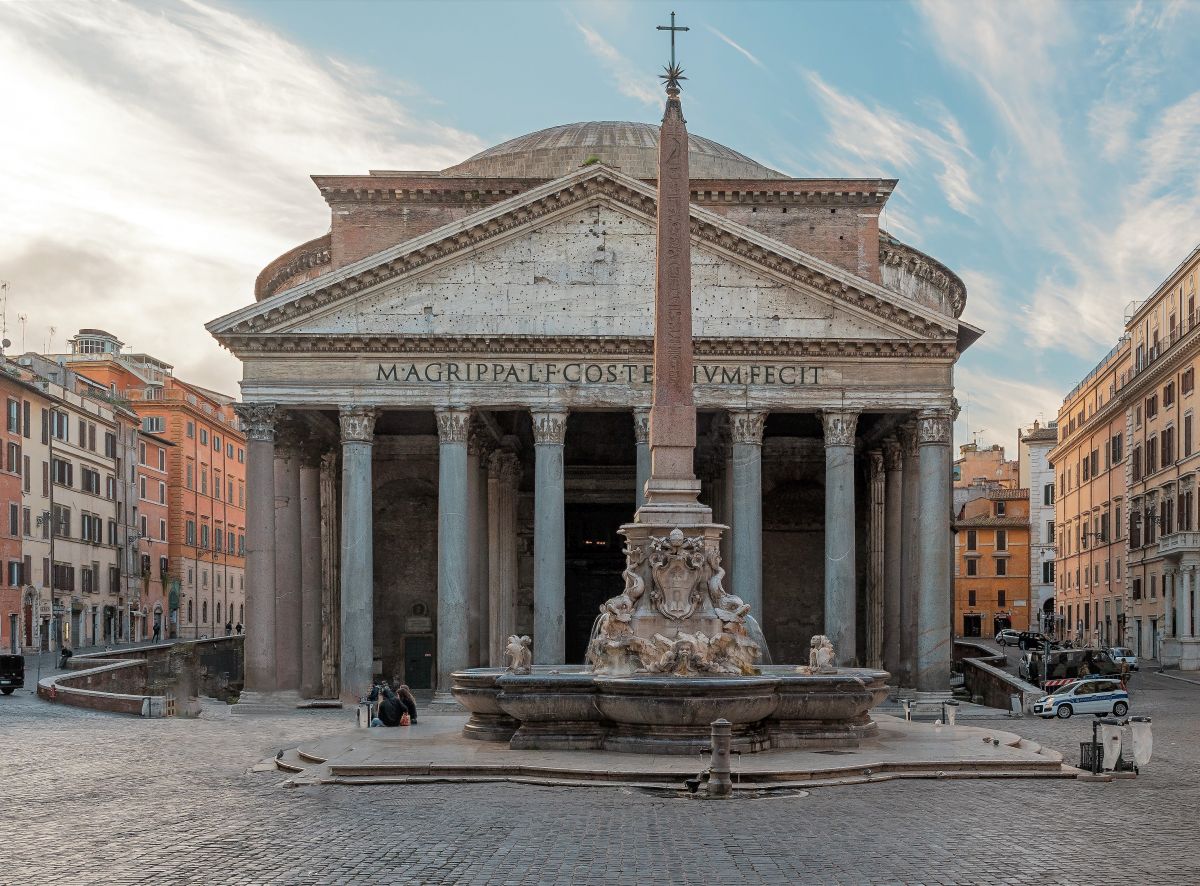The Pantheon in Rome, a symbol of the Eternal City’s grandeur, stands as one of the most well-preserved and influential buildings of ancient Rome. Completed around 125 AD under the reign of Emperor Hadrian, the Pantheon’s architectural prowess continues to captivate historians, architects, and tourists alike. As a testament to Rome’s engineering capabilities, the Pantheon’s remarkable design combines elements from various architectural styles, reflecting the city’s rich history and the ingenuity of its builders.
Origins and Purpose
Initially built by Marcus Agrippa between 27-25 BC, the Pantheon was reconstructed by Emperor Hadrian after a fire in 80 AD destroyed the original building. While its purpose has evolved over time, the Pantheon initially served as a temple dedicated to all Roman gods, which is reflected in its name derived from the Greek words “pan” (all) and “theion” (divine). In 609 AD, Pope Boniface IV converted the Pantheon into a Christian church, which was instrumental in preserving the building throughout the Middle Ages.
Securing Tickets and Tours Online
Numerous digital platforms, such as Pantheon Tickets, provide an assortment of ticket choices and guided tours for the Pantheon. Utilizing a trustworthy website guarantees a smooth experience, granting you access to current information on availability, costs, and tour specifics. Moreover, booking online enables you to organize your trip ahead of time and circumvent any possible letdowns.
Architectural Design
The Pantheon’s most striking feature is its monumental dome, the largest unsupported concrete dome in the world, spanning a diameter of 43.3 meters (142 feet). The use of progressively lighter materials in the dome’s construction, from heavy travertine at the base to porous tufa and pumice at the top, allows for its remarkable stability.
At the dome’s apex is the oculus, a 9-meter (30 feet) wide opening that floods the interior with natural light. The oculus also serves as the dome’s only source of ventilation, as it allows hot air to escape, maintaining a comfortable temperature within the building. The rainwater that enters the Pantheon through the oculus is cleverly drained away through a system of concealed drains in the floor.
The entrance to the Pantheon is marked by a grand portico, supported by 16 massive granite Corinthian columns. The triangular pediment above the portico still bears the original inscription: “M·AGRIPPA·L·F·COS·TERTIVM·FECIT” (Marcus Agrippa, son of Lucius, made [this building] when consul for the third time). This inscription pays homage to the Pantheon’s original creator, Marcus Agrippa, despite Hadrian’s extensive reconstruction.
Significance and Influence
The Pantheon’s architectural design has inspired numerous buildings throughout history, from the Florence Cathedral’s dome by Filippo Brunelleschi to the United States Capitol building. Its combination of classical Greek and Roman elements, as well as the innovative use of concrete, revolutionized architectural design.
The Pantheon’s interior is adorned with a variety of precious marbles, sculptures, and paintings, showcasing the artistic achievements of ancient Rome. The building also serves as the final resting place for several Italian kings and the renowned artist Raphael, further solidifying its historical and cultural significance.
Preservation and Tourism
The Pantheon’s conversion into a Christian church, coupled with periodic restorations, has enabled the building to remain largely intact over the centuries. Today, it stands as a testament to Rome’s rich history and is one of the most visited attractions in the city. The Pantheon’s central location in Rome, along with its well-preserved architectural and artistic elements, offers visitors a unique opportunity to experience the grandeur of ancient Rome in person.
The Pantheon, an architectural marvel of ancient Rome, serves as a symbol of the city’s eternal splendor. Its innovative design and remarkable preservation provide a glimpse into the architectural prowess and artistic achievements of the Roman Empire. As a popular tourist destination, the Pan

